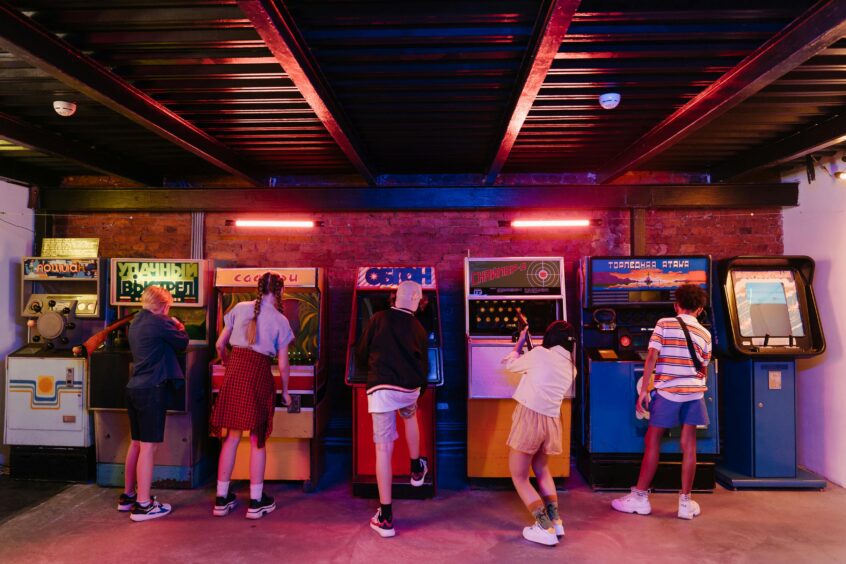Many of you will remember crunching dots in Pac-Man, bouncing a pixel ball in Pong, or jumping barrels in the Super Mario series. Those early games, dating back to the ‘70s, hooked players with primitive visuals.
Those simple joys from decades past still spark nostalgia among many, proving fun doesn’t need high-tech graphics.
Yet, what keeps players glued to their screens hasn’t changed. Clever gameplay, built on tight rules and satisfying challenges, beats shiny looks for keeping people engaged. As games grow flashier, the truth holds: mechanics, not graphics, make players fall in love and stay.
Let’s find out more about how game mechanics help in ensuring gamers come back to play more.
From Pixels to Polygons
By the end of 2025, the global gaming market will be hitting $522 billion in revenue, with an annual growth rate of 7.25 percent. With this kind of growth, it is hard to believe that this industry started with highly pixelated, grainy visuals on a CRT screen.
Gaming visuals have leaped forward since those blocky 8-bit days. The 1990s brought 3D polygons, and now engines like Unreal 5 create near-real worlds. In 2023, 71 percent of the top 1000 game developers used the Unity engine for their sharp graphics power.
Studios lean hard on stunning trailers to sell games, betting visuals will hook players. But titles with weak gameplay, even if gorgeous, often flop fast, leaving players bored after the initial dazzle.
Big-budget games like Cyberpunk 2077 stumbled at launch with clunky mechanics, despite breathtaking visuals. According to the BBC, the backlash was so strong that they had to refund many buyers.
Meanwhile, simpler games shine when their systems feel right. The industry’s push for graphics can drown out the need for solid design. Players might notice a game’s polish first, but without tight mechanics, that shine fades quickly.
Gameplay Is the Lasting Hook
Game mechanics, like movement, strategy, progression, and feedback, shape how players connect with a game. These systems decide if a game feels fun or frustrating.
Titles like Celeste master precise platforming, keeping players gripped with tight controls, while Dead Cells mixes combat and exploration for endless replay. Smart design builds a loop where players feel rewarded for skill and effort.
Good mechanics make every move count. In Celeste, each jump tests precision; in Dead Cells, clever builds pay off. These games don’t lean on fancy visuals but pull players back with systems that feel alive. When mechanics click, players stay for the challenge, not the pretty textures.
Why Game Mechanics Face Serious Scrutiny
Game mechanics aren’t just about fun. They’re now studied in schools, businesses, and even courtrooms. Gameplay systems like reward loops shape player behavior, especially in kids. This is now being scrutinized.
The ongoing video game lawsuit questions whether frequent rewards in games might push young players toward addictive behavior. This can create serious mental health issues among gamers.
TorHoerman Law notes that many of the gameplay mechanics had deliberately addictive properties. These discussions urge creators to build systems that engage without crossing ethical lines.
Players Stick Around for Great Games
Games with deep mechanics build loyal fans. Older players remember the 1990s Prince of Persia, which used motion capture to provide realistic jumps and drops for enhanced gameplay. The grainy screens of those days were incomparable to the HD graphics of today. However, the gameplay and the realistic challenges made up for it.
Likewise, Speedrunners chase perfect runs in games like Super Meat Boy, drawn to tight mechanics that reward skill.
These systems give players reasons to return, whether for a fresh strategy or a tougher challenge. Well-made mechanics turn a game into a lasting passion, not a quick spectacle.
The Road Ahead for Developers
Developers start with mechanics, not visuals, when building games. Early prototypes test core systems like movement, combat, or puzzles before adding textures or lighting.
Hades, a 2020 hit, won fans with crisp combat and storytelling, despite simple visuals, selling 8.4 million copies by 2023. Slay the Spire, an innovative card game that came recently, gripped players with deep strategy, even with basic graphics.
Delays in visual polish don’t always hurt a game if the mechanics shine. Indie studios often focus on gameplay testing over graphics early on. Developers know a game’s heart lies in how it plays, not how it looks, and players feel the difference when that foundation is strong.
Developers also need to embrace AI, which will be used in 50 percent of game development within the next decade.
Why Fun Comes First
Graphics grab attention, but mechanics keep players hooked. Aspiring developers should zero in on crafting rules, risks, and rewards that feel fair and fun. Games like Tetris and Minecraft prove that simple systems can outlast flashy visuals. By building mechanics that challenge and delight, creators shape experiences players have loved for years.
The soul of a game is how it plays. Make that the focus, and everything else falls into place.
If you enjoy games and gaming and want more NEWS from the Gaming World Click Here







